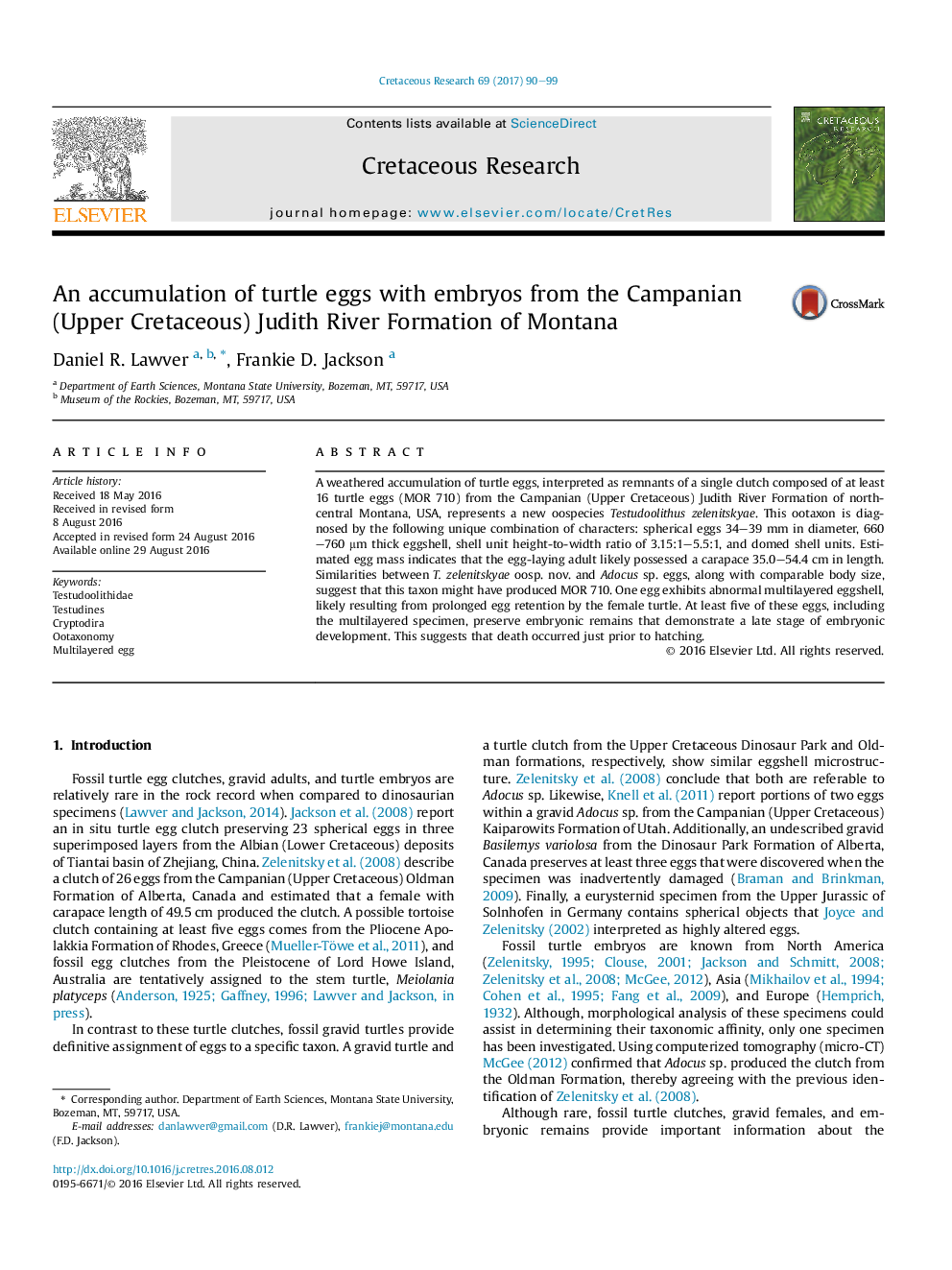| Article ID | Journal | Published Year | Pages | File Type |
|---|---|---|---|---|
| 4746684 | Cretaceous Research | 2017 | 10 Pages |
•We propose a new ootaxon, Testudoolithus zelenitskyae.•Embryonic remains from MOR 710 suggest that death occurred close to hatching.•Similarities with Adocus sp. eggs suggest that Adocus likely produced MOR 710.
A weathered accumulation of turtle eggs, interpreted as remnants of a single clutch composed of at least 16 turtle eggs (MOR 710) from the Campanian (Upper Cretaceous) Judith River Formation of north-central Montana, USA, represents a new oospecies Testudoolithus zelenitskyae. This ootaxon is diagnosed by the following unique combination of characters: spherical eggs 34–39 mm in diameter, 660–760 μm thick eggshell, shell unit height-to-width ratio of 3.15:1–5.5:1, and domed shell units. Estimated egg mass indicates that the egg-laying adult likely possessed a carapace 35.0–54.4 cm in length. Similarities between T. zelenitskyae oosp. nov. and Adocus sp. eggs, along with comparable body size, suggest that this taxon might have produced MOR 710. One egg exhibits abnormal multilayered eggshell, likely resulting from prolonged egg retention by the female turtle. At least five of these eggs, including the multilayered specimen, preserve embryonic remains that demonstrate a late stage of embryonic development. This suggests that death occurred just prior to hatching.
